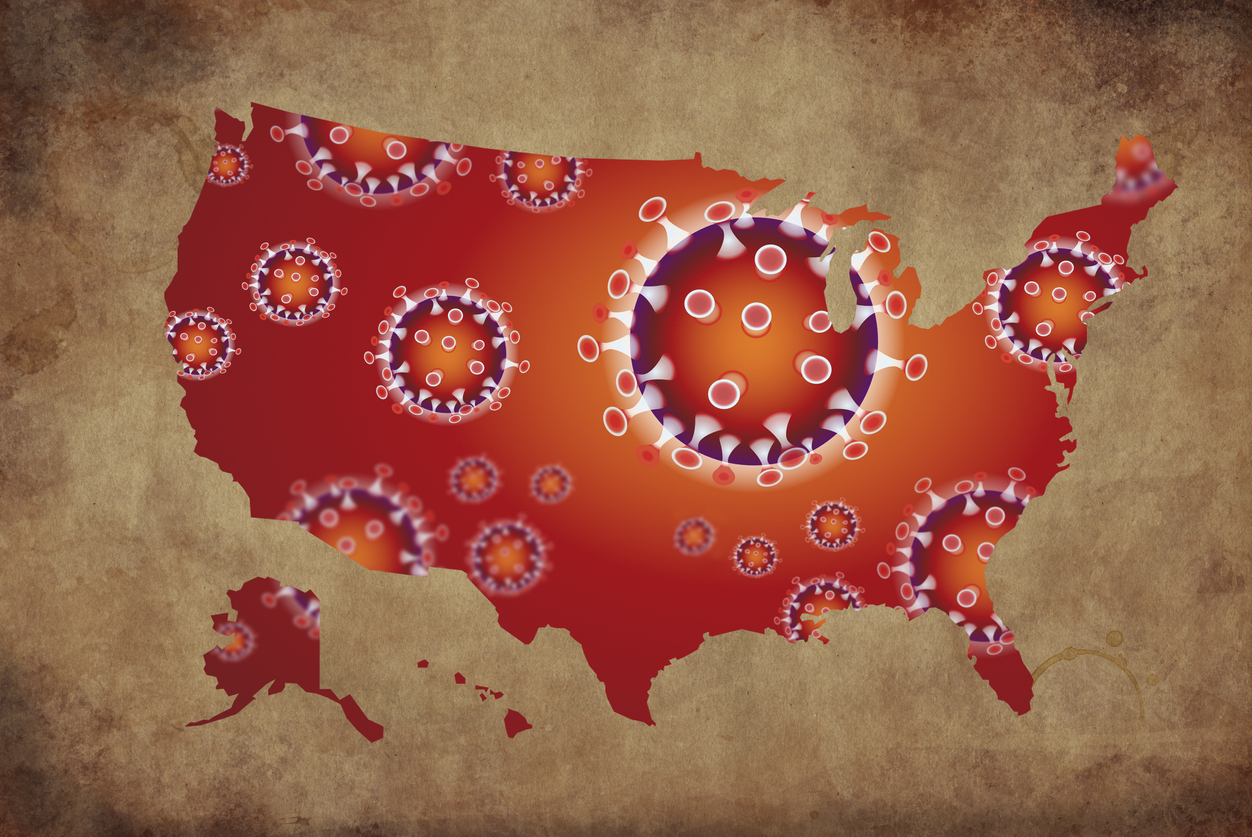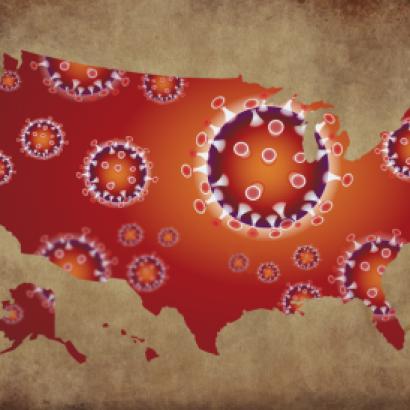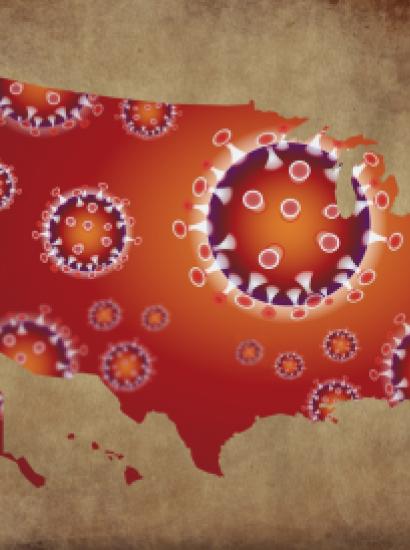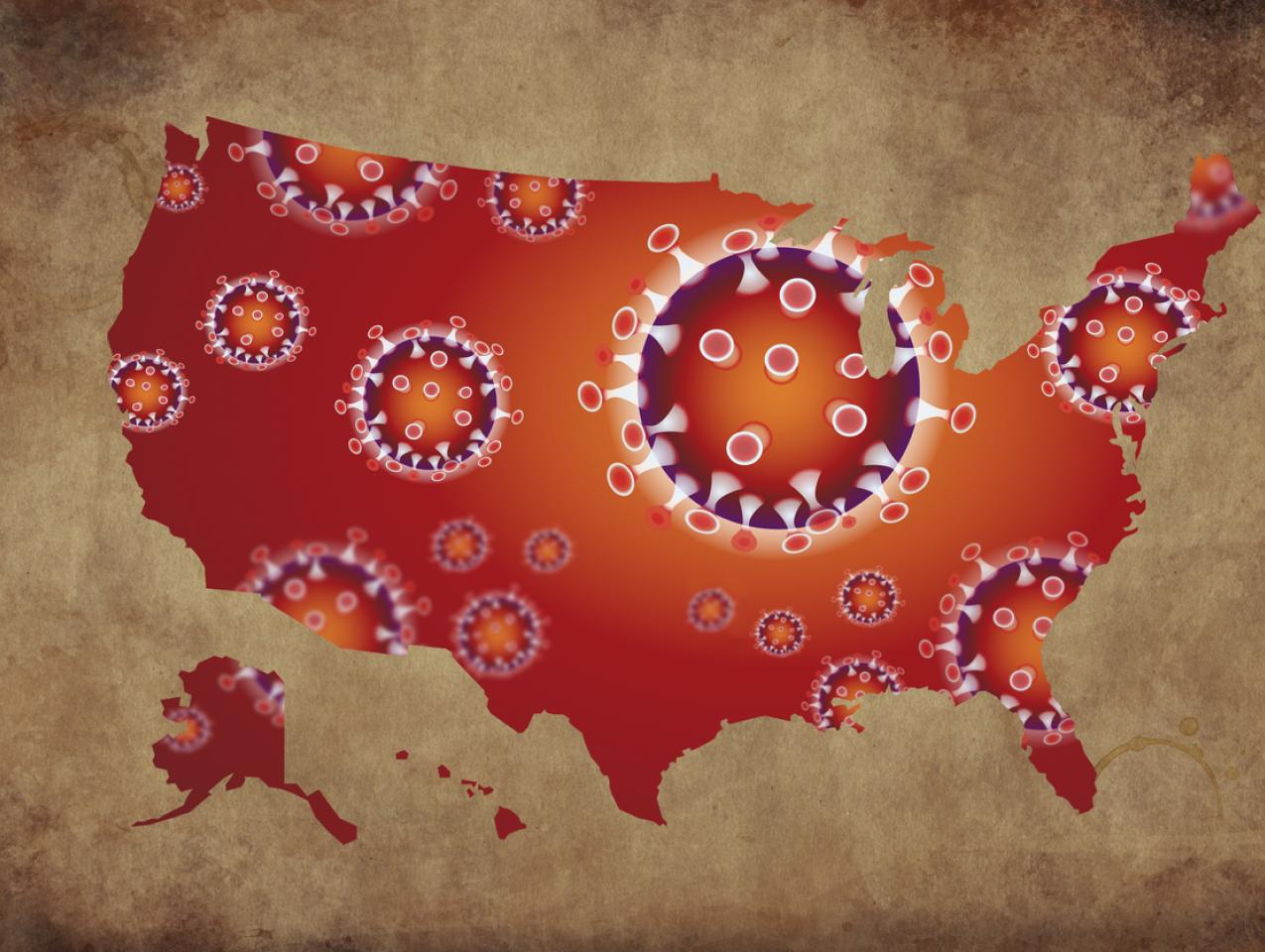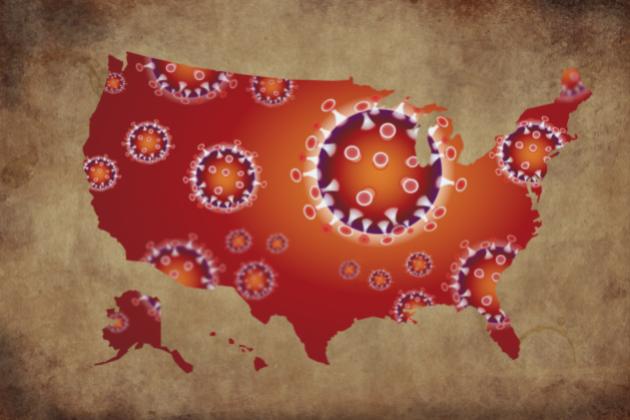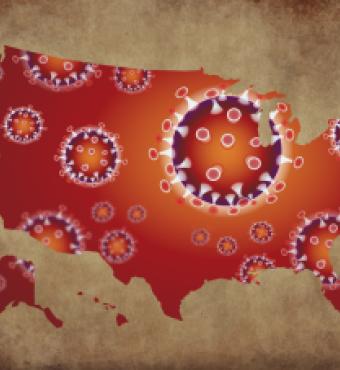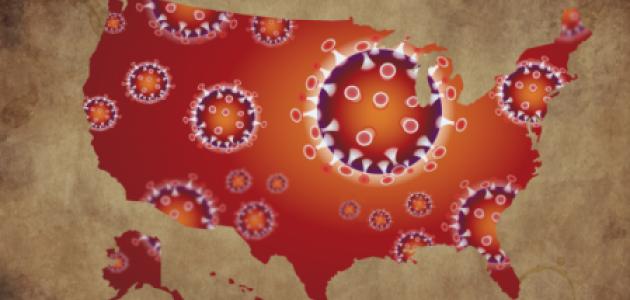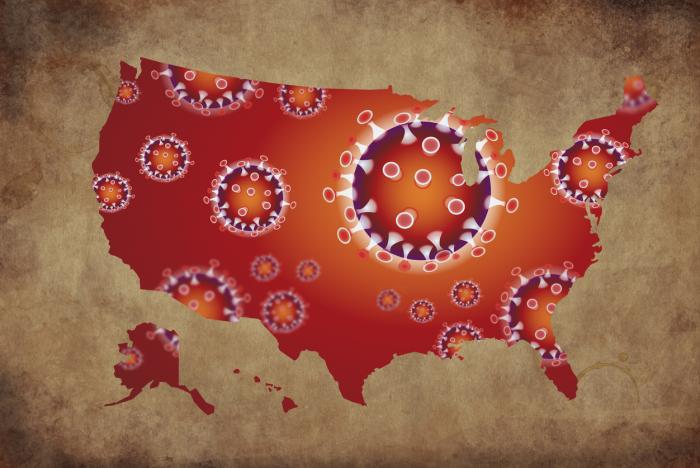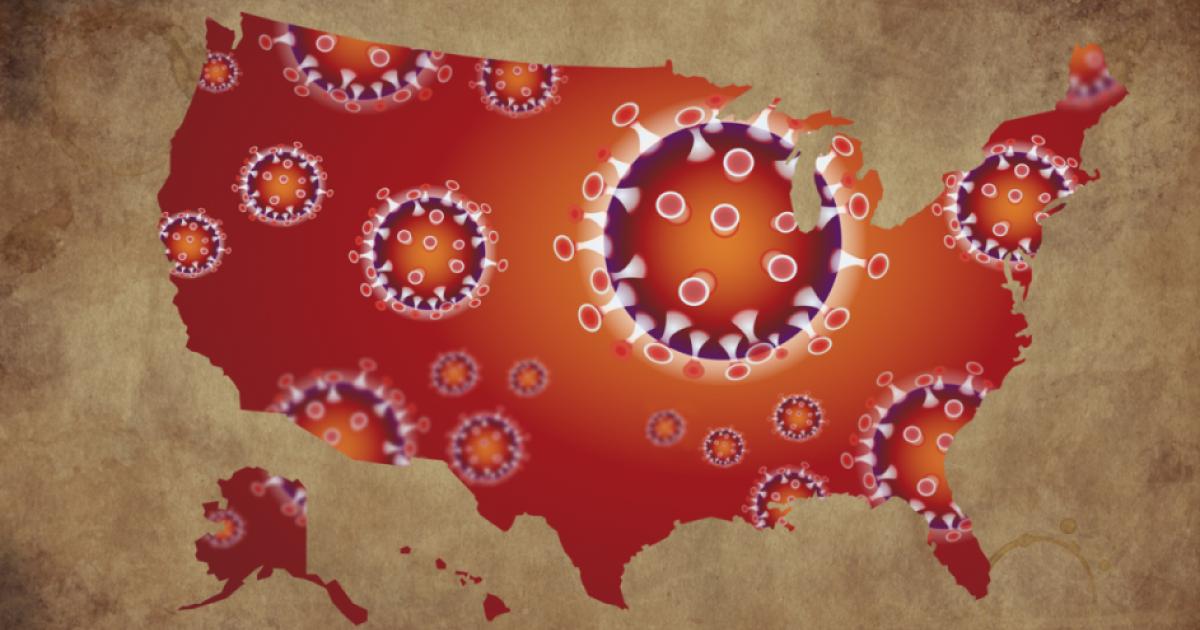- Economics
- Education
- Health Care
- History
The United States has faced crises before, but none quite like the COVID-19 pandemic—a combination of the Spanish Flu of 1918-19 and the Great Depression. To face challenges in moments of catastrophe and discontinuity, Americans have responded and given up or changed routines, traditions, and customs—sometimes quickly, sometimes gradually.
The 9/11 attacks, for example, made us more willing to accept heightened security at the expense of personal privacy. It is this acquiescence to abridged personal privacy that was a major—too often forgotten—effect of 9/11.
When we emerge from stay-at-home orders, we will find an altered economic landscape, and our behavior will be different from the way it was pre-pandemic. For those who contract COVID-19, it could be life-threatening; for everyone else, it will be life-altering.
How many of the changes in behavior we now observe will be merely transitory? Are there structural weaknesses and systemic issues that we have been ignoring because of 11 years of economic prosperity and 113 months of job growth? Might the pandemic be the propellant to get us to change behaviors that we should have been reevaluating but had not?
One area of pre-pandemic discussion was the increased impact of technological change on society. Before COVID-19, the pace of technological change was evolutionary, but the current change is more disruptive.
Advanced, high-tech communications is a key enabling factor that could lead to changes in behavior in a number of areas.
We look at three.
Telecommuting
The numbers are staggering: In addition to the more than 50,000 Americans who have died, 26 million have applied for unemployment benefits in five weeks, and the St. Louis Fed estimates 47 million jobs will be lost due to the pandemic. In addition, large swaths of the workforce have had their work hours cut or were sent home to work remotely.
Are employees as productive at home as they are in their place of employment? According to the US Census Bureau, in 2017, approximately 5 percent of workers spent most of their time working from home and, according to a Gallup poll in 2016, an astounding 43 percent of workers spent at least some time working from home. (Gallup does this particular survey every four years. The 2020 results will appear in the Fall.) With powerful laptops, fast Internet connections, and cloud computing, at-home productivity has increased. In a 2020 YouGov survey of workers, nearly three in five said they were as productive at home as at work.
The results from academic research are mixed. Stanford University economics professor Nicholas Bloom’s research and a study from the Harvard Business School found productivity gains from working at home. In subsequent observations, Bloom is less sanguine, and he notes that the effects shown in his 2011 study may not be scalable.
There seems little doubt that as workers become more accustomed to the rhythm and routine of telecommuting, they are likely to become more comfortable and more productive working at home. The post-pandemic studies will determine if telecommuting is an accommodation by management or a bona fide working arrangement.
A substantive distinction does exist between those who can work from home and those who must physically be on the job, now often referred to as “essential” workers. Sectors hit hardest by the work slowdown—transportation, leisure travel and accommodations, entertainment, retail sales—depend on lower-paid, part-time, gig workers, and contractors. The few sectors that have done well—hospital care, grocery chains, delivery services, and video entertainment—depend on experienced, full-time employees and tech specialists. Adding upper management to those still at work highlights the difference between knowledge workers and the generally “non-essential” service workers.
The pandemic may also accelerate the use of robotics and artificial intelligence (AI) in the manufacturing and, even, service industries. Automated telemarketing has become a regular annoyance, but it is easy to recognize that AI (including voice recognition software) leads to efficiencies. There were 1.8 robots per thousand workers in the US in 2017, more than triple the ratio in 1995. That growth will continue—likely accelerate—in 2020.
AI is a cost-saving and labor-saving device, and the increased use of AI will lead to a structural change in production away from labor and toward robotics. The total cost of labor as a proportion of total production costs will fall.
As labor productivity increases in a competitive and dynamic economy, management will recognize that the advantage of the lower hourly wage in many Asian countries dissipates and that the relative total cost of U.S. labor (because of fewer but more productive workers) decreases. An unintended consequence, thus, may be that firms move production back to the U.S. from abroad, thus reducing U.S. corporations’ dependence on foreign manufacturing. This further serves to shorten the supply chain, to which U.S. firms are now sensitive. There will be fewer jobs per unit of product, but these jobs will be in the U.S., not abroad.
Distance learning
Over the past decade and a half, platforms have emerged and evolved to provide at-home education at different levels. These include: the Khan Academy, PBS Eons, History on Trial, and Minutephysics, for middle and high school children; and Coursera and Udacity, among others, and proprietary programs delivered by colleges and universities, for post-secondary education. In part, because of educational aids such as these and online lesson plans, home schooling exploded in the US, growing from 850,000 K–12 students in 1999 to 1.7 million in 2016, where it has remained for the past four years. However, this is a small fraction of the nation’s 57 million K–12 students. On the other hand, approximately 35 percent of college students were enrolled in some manner of distance learning in 2018.
Because of COVID-19, virtually every student is now schooled at home. The flipped classroom, self-paced learning, and massive online classes (MOOCs), once viewed as novelties, are now de rigueur because of social distancing and stay-at-home orders.
Regardless of the severity, intensity, and length of the pandemic, returning to school later this year will present a new reality for students and teachers. There will be changes in students’ attendance protocols as well as the nature of instruction. For example, in California there are numerous options that school districts are considering: smaller class sizes to accommodate social distancing, split sessions, two- or three-day school weeks, and year-round schooling among them.
With synchronous (live) and asynchronous (posted) instruction, teaching during the pandemic provides on-the-job training in remote learning. There will be more reliance on flipped classrooms, where the teacher lectures online and then work with students individually in the classroom. Teachers won’t need to repeat lectures several times a day—the same lecture can be used for different sections of students. As teachers and administrators assess the success of distance learning, it will become more accepted and more often implemented.
Telemedicine
In March, the Centers for Medicare and Medicaid Services (CMS) approved broad access for telehealth services for Medicare recipients. Medicare reimbursements accounted for 21 percent of spending on U.S. health care, and Medicaid accounts for another 16 percent. The CMS’s change in approved benefits greatly expands access to Medicare recipients and enables virtually the full complement of medical professionals to provide timely and interactive communications to Medicare recipients—whether for COVID-19 related issues or not.
Before the pandemic, “televisits” accounted for a small percentage of medical professional-patient interactions, with Millennials the predominant users of the service. In a behavioral sea-change, preliminary tallies indicate that telehealth visits increased by 50 percent in March, and estimates are that televisits will increase by a factor of five for the year.
Televisits are not perfect substitutes for office visits (a doctor can’t palpate a lump using a smartphone), but for initial triage and routine problems, they are time-efficient and cost-effective. Moreover, during this period when there is significant concern about virus transmission, televisits ensure the safety of the health care providers and reduce the risk of exposure for all patients.
Increased use of telemedicine could prove to be a silver lining of the pandemic. Similar to the effects of telecommuting, as doctors and patients become more comfortable with telemedicine, demand will increase. As health care professionals encourage their patients to take advantage of this vehicle, the costs and crowding of the overtaxed health care system will diminish. Given the convenience for patients, the increased productivity of healthcare professionals, and the cost implications, the incentives are aligned in favor of continued use beyond the timeframe of the pandemic.
The CMS’s authorization is part of the presidential emergency declaration and, hence, is temporary. If successful as an experiment (and initial studies indicate it is), there will be pressure on the CMS to make this authorization permanent.
The government has historically played a big role in facilitating change in American culture and norms, such as with significant financial incentives to colleges, research centers, and students to undertake the study of the hard sciences following the launch of Sputnik and the subsequent space race. Yes, the government spent more than $20 billion on the race to the moon, but the technological leadership the U.S. developed continues to pay dividends.
Often, it is not only the government that creates the change. The CAFE standards that the federal government enacted were a result of the Arab oil embargo of 1973. However, it was not these regulations alone that motivated Americans to move from domestic gas-guzzlers to foreign-made compacts; it was consumer awareness of the environmental and financial benefits of smaller cars that triggered the change.
For the U.S. economy and society to get up to pre-pandemic speed after months of inactivity will require ingenuity, innovation, and adaptability. There will be newly enacted regulations and executive orders, to be sure. But the lion’s share of the effort will come from private firms and organizations that are nimble, and from citizens who are willing—and eager—to embrace change and to adopt new routines and technologies that will make the recovery possible. The COVID-19 pandemic will challenge Americans like nothing since the Great Depression. Our willingness to change and adapt for the good of the country will be decisive.
Bowman Heiden is a visiting scholar at the Hoover Institution. He also serves as co-director of the Center for Intellectual Property (CIP), which is a joint center for knowledge-based business development between University of Gothenburg (Sweden), Chalmers University of Technology (Sweden), and the Norwegian University for Science and Technology.
Richard Sousa is a research fellow, emeritus, at the Hoover Institution.







